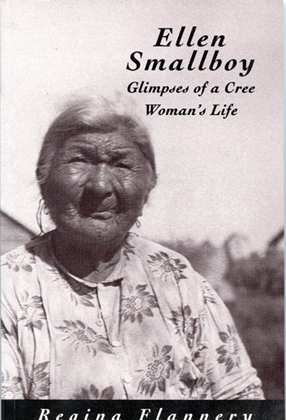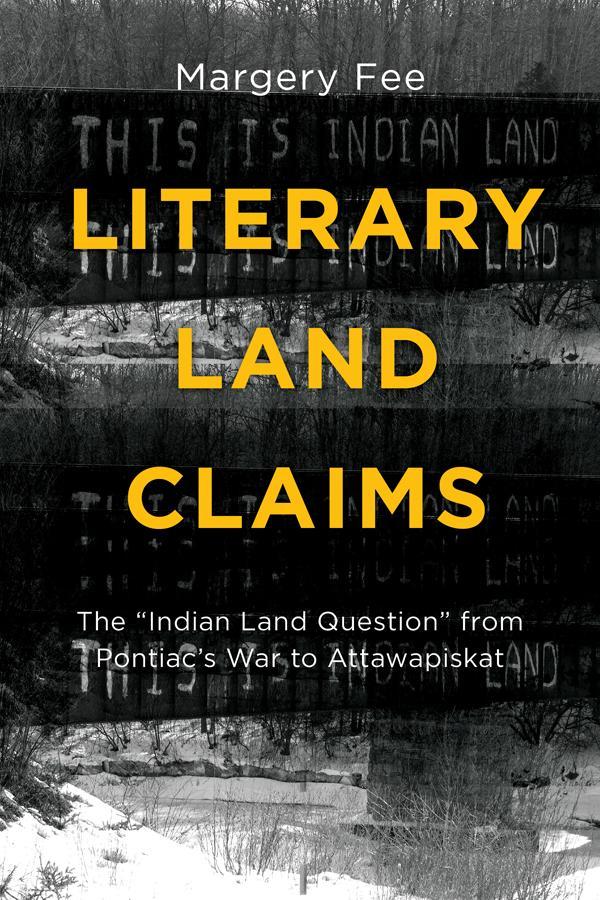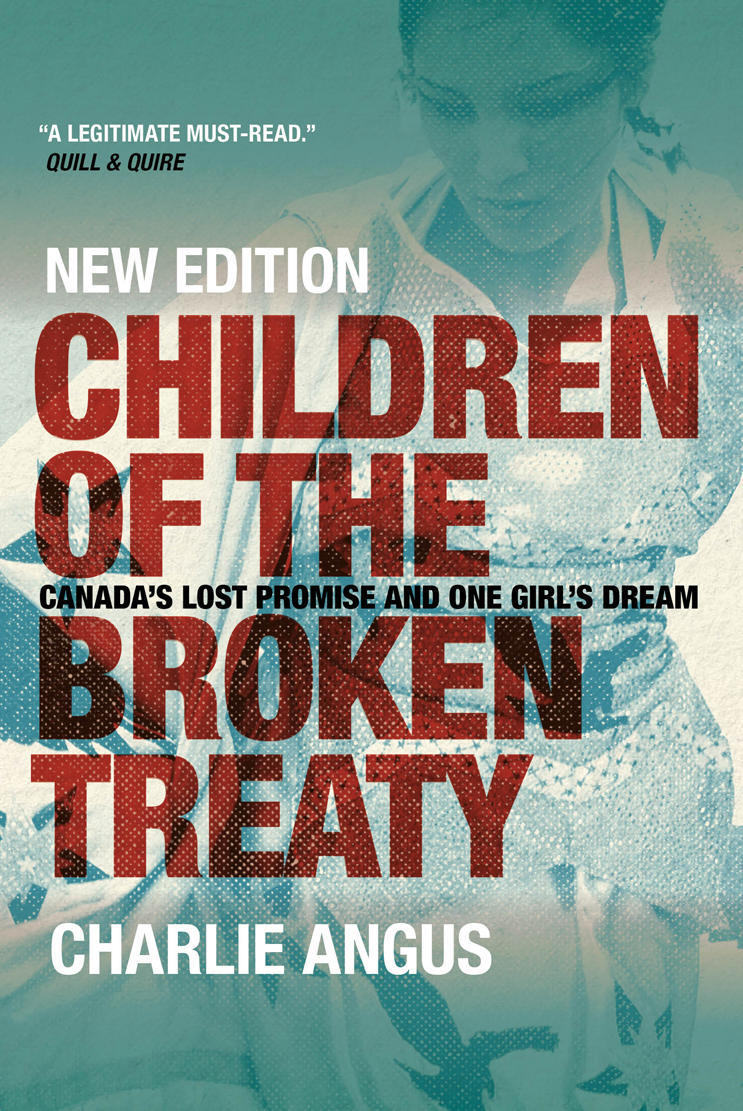- PRÊTS ET ACCÈS
- RECHERCHE
- SERVICES
- ESPACES
- RESSOURCES
- À PROPOS
- NOUS JOINDRE
PRÊT ET ACCÈS
RECHERCHE
ESPACES
RESSOURCES

For more than a century, the vast lands of Northern Ontario have been shared among the governments of Canada, Ontario, and the First Nations who signed Treaty No. 9 in 1905. For just as long, details about the signing of the constitutionally recognized agreement have been known only through the accounts of two of the commissioners appointed by the Government of Canada. Treaty No. 9 provides a truer perspective on the treaty by adding the neglected account of a third commissioner and tracing the treaty's origins, negotiation, explanation, interpretation, signing, implementation, and recent commemoration.Restoring nearly forgotten perspectives to the historical record, John Long considers the methods used by the government of Canada to explain Treaty No. 9 to Northern Ontario First Nations. He shows that many crucial details about the treaty's contents were omitted in the transmission of writing to speech, while other promises were made orally but not included in the written treaty. Reproducing the three treaty commissioners' personal journals in their entirety, Long reveals the contradictions that suggest the treaty parchment was never fully explained to the First Nations who signed it.
(McGill-Queen's University Press)
Having been born in a tent on Bear Island, Lake Temagami, in 1908, Madeline Katt Theriault could recall an earlier independent and traditional First Nations lifestyle. In this book, the late author proudly tells of her youth and coming of age by sharing her vivid memories and drawing on exceptional old family photographs. In her own words, she writes of a time long ago - a time that was difficult, but not without personal rewards. "Moose to Moccasins is a remarkable account by Madeline Theriault, or Ka Kita Wa Pa No Kwe ('Wise Day Woman'), who, in her own words, has lived 'in both cultures, Indian and white man's.' From her birth in the Temagami region in 1908, to her life in North Bay in the 1970s and 1980s, she takes the reader on a remarkable journey. We travel through the bush with her as a young girl. 'We killed animals only when needed and we could drink water anywhere. Our camp was always fresh; fresh balsam branches for our beds and floors in the camp. Such lively smells and the air was pure.' We step back into another century, into another universe. There is a wealth of information in these pages about a people, and a way of life, about which most non-Natives know almost nothing." - Donald B. Smith, Professor of History, University of Calgary
(Dundurn)

The intimate story of a Cree woman's life and of the old ways of the James Bay Cree.
Ellen Smallboy's life spanned a period of immense change among the Cree of northern Ontario. Born in about 1853 near James Bay, for most of her lifetime Smallboy led a semi-nomadic life that revolved around seasonal hunting. By the time she was an old woman, however, Cree lifestyle and culture were undergoing dramatic changes. Regina Flannery draws on her meetings with Smallboy, then aged eighty, to produce a detailed picture of her life during both these periods.
Flannery recounts Smallboy's childhood at Lake Kesagami, her father's early death and the effect of this tragedy, her marriage to Simon Smallboy and move to French River, and her old age at Moose Factory. Through Smallboy's anecdotes and episodes in her life, long-vanished values and norms of Cree society are illustrated and recorded.
A concise history of European contact with James Bay Cree by John Long and a summary of literature on the Cree of Moose Factory and James Bay by Laura Peers place Smallboy's life in historical context.
(McGill-Queen's University Press)

Trailblazer. Residential school Survivor. First Treaty Indigenous player in the NHL. All of these descriptions are true--but none of them tell the whole story.
Fred Sasakamoose, torn from his home at the age of seven, endured the horrors of residential school for a decade before becoming one of 120 players in the most elite hockey league in the world. He has been heralded as the first Indigenous player with Treaty status in the NHL, making his official debut as a 1954 Chicago Black Hawks player on Hockey Night in Canada and teaching Foster Hewitt how to pronounce his name. Sasakamoose played against such legends as Gordie Howe, Jean Beliveau, and Maurice Richard. After twelve games, he returned home.
When people tell Sasakamoose's story, this is usually where they end it. They say he left the NHL to return to the family and culture that the Canadian government had ripped away from him. That returning to his family and home was more important to him than an NHL career. But there was much more to his decision than that. Understanding Sasakamoose's choice means acknowledging the dislocation and treatment of generations of Indigenous peoples. It means considering how a man who spent his childhood as a ward of the government would hear those supposedly golden words: "You are Black Hawks property."
Sasakamoose's story was far from over once his NHL days concluded. He continued to play for another decade in leagues around Western Canada. He became a band councillor, served as Chief, and established athletic programs for kids. He paved a way for youth to find solace and meaning in sports for generations to come. Yet, threaded through these impressive accomplishments were periods of heartbreak and unimaginable tragedy--as well moments of passion and great joy.
This isn't just a hockey story; Sasakamoose's groundbreaking memoir sheds piercing light on Canadian history and Indigenous politics, and follows this extraordinary man's journey to reclaim pride in an identity and a heritage that had previously been used against him.
(Viking)

AWARDS - 2010, Shortlisted - Harold Adams Innis Prize, Canadian Federation for the Humanities and Social Sciences
The James Bay Cree lived in relative isolation until 1970, when Northern Quebec was swept up in the political and cultural changes of the Quiet Revolution. The ensuing years have brought immense change for the Cree, who now live with the consequences of Quebec’s massive development of hydroelectricity, timber, and mineral resources in the North.
Home Is the Hunter presents the historical, environmental, and cultural context from which this recent story grows. Hans Carlson shows how the Cree view their lands as their home, their garden, and their memory of themselves as a people. By investigating the Cree’s relationship with the land and their three hundred years of contact with outsiders, the author illuminates the process of cultural negotiation at the foundation of ongoing political and environmental debates.
This book is more than a story of dam building and industrial logging in northern Quebec. It offers a way of thinking about indigenous peoples’ struggles for rights and environmental justice in Canada and elsewhere.
(UBC Press)

Literature not only represents Canada as “our home and native land” but has been used as evidence of the civilization needed to claim and rule that land. Indigenous people have long been represented as roaming “savages” without land title and without literature. Literary Land Claims: From Pontiac’s War to Attawapiskat analyzes works produced between 1832 and the late 1970s by writers who resisted these dominant notions.
Margery Fee examines John Richardson’s novels about Pontiac’s War and the War of 1812 that document the breaking of British promises to Indigenous nations. She provides a close reading of Louis Riel’s addresses to the court at the end of his trial in 1885, showing that his vision for sharing the land derives from the Indigenous value of respect. Fee argues that both Grey Owl and E. Pauline Johnson’s visions are obscured by challenges to their authenticity. Finally, she shows how storyteller Harry Robinson uses a contemporary Okanagan framework to explain how white refusal to share the land meant that Coyote himself had to make a deal with the King of England.
Fee concludes that despite support in social media for Theresa Spence’s hunger strike, Idle No More, and the Indian Residential School Truth and Reconciliation Commission, the story about “savage Indians” and “civilized Canadians” and the latter group’s superior claim to “develop” the lands and resources of Canada still circulates widely. If the land is to be respected and shared as it should be, literary studies needs a new critical narrative, one that engages with the ideas of Indigenous writers and intellectuals.
(Wilfrid Laurier University Press)

In this new edition of Charlie Angus's award-winning and bestselling book, he brings us up-to-date on the unrelenting epidemic of youth suicides in Indigenous communities, the Thunder Bay inquiry into the shocking deaths of young people there, the powerful impact of the Truth and Reconciliation Commission's final report, and how the Trudeau government's commitment to Indigenous communities continues to be stymied by decades-old policy roadblocks. On the heels of Idle No More and the TRC, Angus says that the push for equity in education, health, and infrastructure will continue to be led by a mobilized Indigenous grassroots that cannot be ignored.
(University of Regina Press)

The Royal Canadian Geographical Society, in partnership with Canada's national Indigenous organizations, has created a groundbreaking four-volume atlas that shares the experiences, perspectives, and histories of First Nations, Inuit and Métis peoples. It's an ambitious and unprecedented project inspired by the Truth and Reconciliation Commission's Calls to Action. Exploring themes of language, demographics, economy, environment and culture, with in-depth coverage of treaties and residential schools, these are stories of the Indigenous Peoples of Canada, told in detailed maps and rich narratives.
This extraordinary project offers Canada a step on the path toward understanding.
The volumes contain more than 48 pages of reference maps, content from more than 50 Indigenous writers; hundreds of historical and contemporary photographs and a glossary of Indigenous terms, timelines, map of Indigenous languages, and frequently asked questions. All packaged together in a beautifully designed protective slipcase.
(Société géographique royale du Canada)
Aide à l'usager
Communiquez avec nous pour de l'aide en ligne aide.bibliotheque@uqat.ca
Accès rapide
La bibliothèque
© Bibliothèque Cégep A-T et UQAT